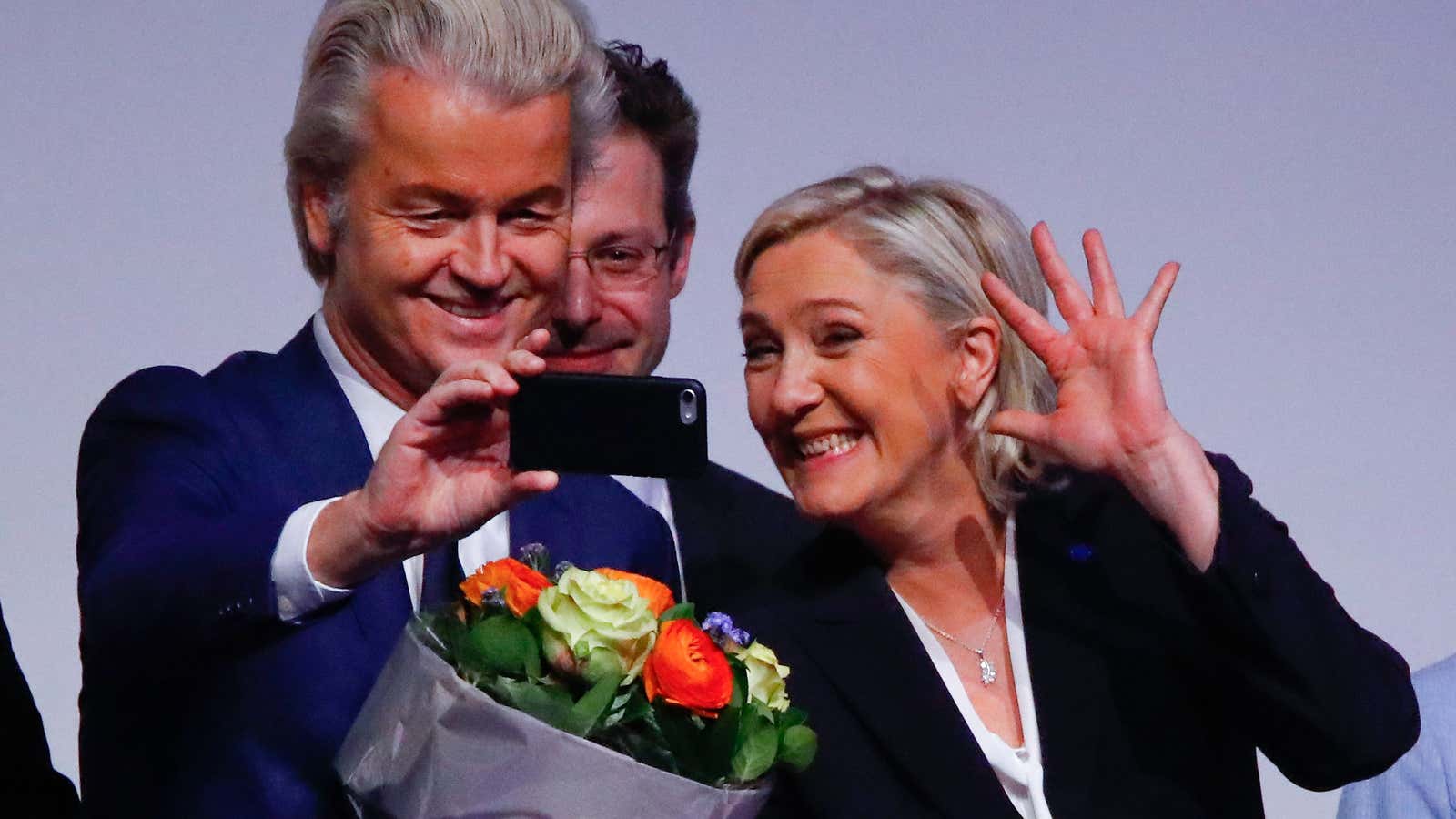The world sighed with relief when a number of European populists, including the Netherland’s Geert Wilders and France’s Marine Le Pen, lost their elections this year. That relief may be short-lived—long-term trends of populist support in Europe suggest that this authoritarian movement isn’t going away.
One in five Europeans (a total of 55.8 million people) voted for a populist party in 2016 and 2017, according a new study by the European Policy Information Center. The think tank analyzed electoral data in EU member states as well as Iceland, Norway, Switzerland, Serbia, and Montenegro and found the vote share for authoritarian populist parties jumped from 10.6% in 1980 to 18.4% in 2017.
Most of this success has been quite recent. The average vote share of populist parties increased by only 1 percentage point from 1980 to 2000, but then jumped by 7 percentage points from 2000 to 2017.
The vote share for populist parties has overtaken support for liberalism in the last two decades. Over the same period, there’s been a decline for support for mainstream ideologies, including of conservatism and Christian democracy (down 4.7 percentage points), while support for social Democracy has decreased by 4.1 percentage points.
The report looked at both right-wing and left-wing populists. It suggested an authoritarian populist party had the following six characteristics
- A party that fights a corrupt and crony elite;
- lacks patience for the rule of law;
- demands direct democracy;
- pursues a more powerful state through police and military (common with right-wing populists) and nationalization of banks and big corporations (left-wing populists);
- critical of immigration, free trade, globalization, and the institutions that represent those forces (EU and NATO);
- and uses revolutionary language to promise dramatic upheaval.
The 2009 recession and the ongoing refugee crisis gave nationalist-authoritarian-populist parties their biggest boost, with many receiving their best electoral result during the last year. Among a number of examples of right-wing populist parties in the report were Le Pen’s Front National, Wilders Party for Freedom, and the United Kingdom Independence Party (UKIP).
Following the losses of Wilders and Le Pen, some had celebrated the defeat of the populist tide, but study researcher Andreas Johansson Heinö says, “it is way to early to declare the end of populism.” He argues it still remains unclear whether populism has reached its peak or not, and whether the coming years will see a decline. “The data shows that both left- and right-wing populism seems to have stabilized on very high levels since 2015,” he said.
The last decade has also seen the return of the radical left. The vote share of these parties declined between 1980 and the late 2000s, but gained ground over the last seven years. The radical left increased its average vote share to 6.3% in 2017. The examples of left-wing populists included in the report were Spain’s Podemos and Jean-Luc Mélenchon’s Unsubmissive France (a far-left presidential candidate), who plans to make a ruckus in the French parliament.
